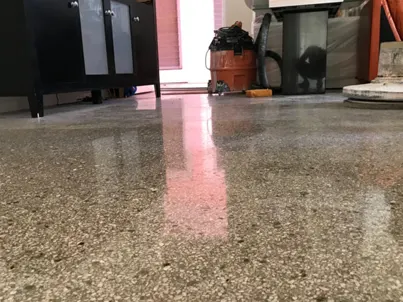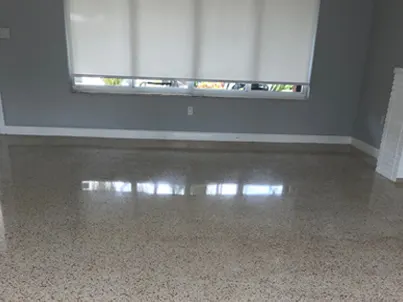The Role of Terrazzo Floors in Sustainable Architecture and Design
Terrazzo floor restoration has been around for centuries, but it is experiencing a resurgence in popularity due to its durability, versatility, and sustainability. Terrazzo flooring is made by mixing chips of marble, glass, granite, or other materials with cement, creating a unique and durable flooring option that can be used in a variety of settings.
In recent years, there has been a growing interest in sustainable architecture and design, which has led to a renewed appreciation for terrazzo flooring. Terrazzo is an eco-friendly choice for flooring because it can be made using recycled materials and requires less energy to produce than other flooring materials.
One of the primary benefits of terrazzo flooring is its durability. Terrazzo floors are incredibly strong and resistant to wear and tear, making them an excellent choice for high-traffic areas such as airports, hospitals, and schools. Additionally, terrazzo is resistant to stains, scratches, and moisture, which makes it an excellent choice for kitchens and bathrooms.

Another advantage of terrazzo flooring is its versatility. Terrazzo can be customized to fit any design aesthetic or color scheme, making it a popular choice for architects and designers. Terrazzo floors can be made in a variety of colors and patterns, and the size and shape of the chips can be varied to create unique designs.
Terrazzo flooring is also a sustainable choice for flooring because it can be made using recycled materials. Terrazzo chips can be made from recycled glass or other materials, which reduces waste and minimizes the environmental impact of producing new materials. Additionally, terrazzo requires less energy to produce than other flooring materials, which reduces its carbon footprint.
In addition to its sustainability and durability, terrazzo flooring is also easy to maintain. Terrazzo floors require regular sweeping and mopping to keep them looking their best, and periodic polishing can restore their shine. Unlike other flooring materials such as carpet or wood, terrazzo does not require regular replacement, which makes it a cost-effective choice for flooring.

One of the best examples of terrazzo flooring being used in sustainable architecture is the Bank of America Tower in New York City. This 55-story tower was built using a variety of green building techniques, including the use of terrazzo flooring in the lobby and other common areas. The terrazzo flooring in the Bank of America Tower was made using recycled glass chips, which helped to reduce the environmental impact of the building’s construction.
Terrazzo flooring is a sustainable and versatile choice for flooring in both residential and commercial settings. Terrazzo’s durability, easy maintenance, and customizable design options make it an excellent choice for architects and designers, while its eco-friendly properties make it a sustainable choice for those who are concerned about the environment. As more and more people become interested in sustainable architecture and design, it is likely that terrazzo flooring will continue to grow in popularity.
